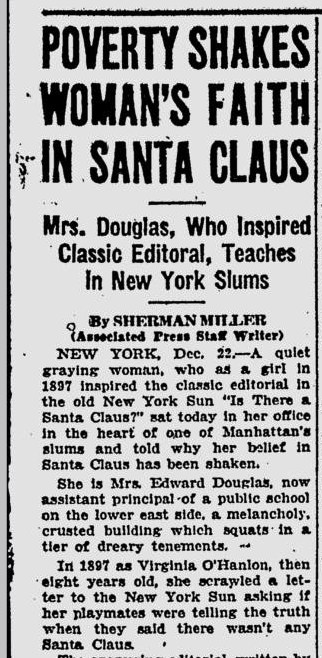Customs
Life in America: 1947
Posted By: Paul - Sun Nov 10, 2013 -
Comments (5)
Category: Culture and Civilization, Customs, 1940s, North America
Life in America: 1953
Posted By: Paul - Sat Aug 24, 2013 -
Comments (4)
Category: Customs, 1950s, North America
Life in America: 1977
Posted By: Paul - Sun Jul 14, 2013 -
Comments (0)
Category: Customs, 1970s, North America
Life in America: 1933
Posted By: Paul - Thu Jun 20, 2013 -
Comments (5)
Category: Customs, 1930s, North America
Life in America: 1961
A semi-random slice across the weirdness of history. The first of an occasional series.
Posted By: Paul - Mon Jun 03, 2013 -
Comments (4)
Category: Customs, Food, Sports, Advertising, 1960s
Virginia O’Hanlon, Santa Claus Skeptic
Virginia O'Hanlon is famous as the young girl who wrote a letter to the New York Sun in 1897 asking if Santa Claus was real, prompting a reply from Francis P. Church, "Yes, Virginia, there is a Santa Claus." But you have to feel a bit sorry for O'Hanlon, because almost every year after that, until she died in 1971, reporters sought her out to do follow-ups to find out if she still believed in Santa Claus. It must have been frustrating to be asked the same question, year after year.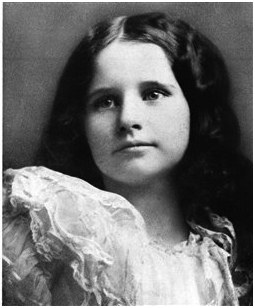
O'Hanlon as a young girl
O'Hanlon was always very gracious about the repetitive questioning, (seems like she was a very nice lady), and would say that of course she believed in Santa Claus — except for 1935 when she must have been in a dark mood, because in that year she came close to saying that she no longer believed. She told a reporter:
If Santa lives today, he lives only in the childish joy of those he has made happy. How can he live in the crying hearts of those he has forsaken? Little children, such as I was, trust in Santa Claus as a miraculous munificence through which all things are made possible. There will be a tree, there will be loved ones about, gaiety and cherished toys that have been dreamt about for months.
Those whom Santa visits think of Christmas as a beautiful, sacred occasion which it should be — but today seldom is. But for every child tucked into bed Christmas night with his new toy, there are hundreds, no thousands, who huddle in ragged bed clothing sobbing in the night at a fate at best cruel.
In subsequent years she returned to giving simpler, more upbeat answers. The clip below shows her on the Perry Como show in 1960.
And here she is in 1966, looking slightly frazzled. Perhaps the questioning was finally getting to her.
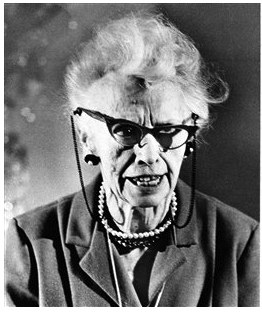
Posted By: Alex - Mon Dec 24, 2012 -
Comments (4)
Category: Customs, Holidays
What’s the origin of the Boy Scout’s left-hand handshake?
As the 1935 Boy Scout handbook says, "By agreement of the Scout Leaders throughout the world, Boy Scouts greet Brother Scouts with a warm left hand clasp." (wikipedia). But what's the origin of this form of greeting?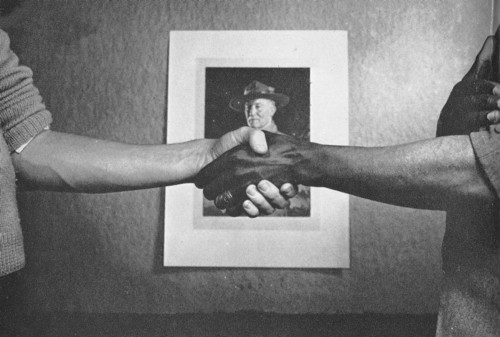
Lord Baden-Powell, founder of the Boy Scouts, claimed he learned the custom from a defeated African chieftain whom he attempted to greet in 1896 by holding out his right hand. The chieftain supposedly replied: "The men in my tribe greet the bravest with the left hand." There are different versions of this story, but I think all of them can safely be dismissed as bogus.
There's also a theory that the scouts shake with their left hand because it's the hand closer to the heart. I also doubt this theory.
I think the real origin traces back to Baden-Powell's passion for promoting ambidexterity — and not just the ability to use either hand with equal dexterity, but to use both hands for different tasks, simultaneously.
Baden-Powell expressed some of these views in the brief introduction he wrote to John Jackson's 1905 book Ambidexterity, or, Two-handedness and two-brainedness:
It is hardly possible to lay too much stress upon this bimanual training, or to attach too much important to the principke, because our hands -- and our arms, from which, for purposes both of argument and education, they cannot be separated -- not only constitute our chief medium of communication with the outer world, but they are likewise the pre-eminent agency by which we stamp our impress upon it...
The heavy pressure of my office work makes me wish that I had cultivated, in my youth, the useful art of writing on two different subjects at once. I get through a great deal extra -- it is true -- by using the right and left hand alternately, but I thoroughly appreciate how much more can be done by using them both together.
Posted By: Alex - Thu Aug 02, 2012 -
Comments (7)
Category: Customs, Rituals and Superstitions
Telling The Bees
 George Morley writes in Shakespeare's Greenwood: The Customs of the Country (1900) of the curious tradition of "telling the bees":
George Morley writes in Shakespeare's Greenwood: The Customs of the Country (1900) of the curious tradition of "telling the bees":
I don't have any bees, but I guess I could try "telling the gopher" that lives in my front yard.
Posted By: Alex - Fri Apr 27, 2012 -
Comments (12)
Category: Animals, Customs, Superstition
Bone Houses

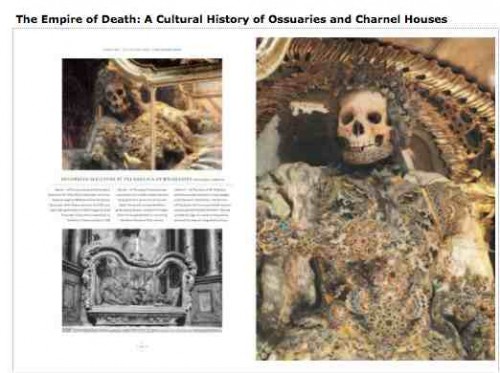
Anyone in LA might be interested in this signing:
Paul Koudounaris signs and discusses his book, The Empire of Death
Thursday, October 27, 7 p.m.
The Brand Library
1601 West Mountain Street
Glendale, CA 91201-1209
(818) 548-2051
Posted By: Paul - Tue Oct 25, 2011 -
Comments (2)
Category: Body, Customs, Death, Religion, Books
les fêtes étranges

Posted By: Nethie - Sun Oct 10, 2010 -
Comments (2)
Category: Animals, Awards, Prizes, Competitions and Contests, Contests, Races and Other Competitions, Customs, Fairs, Amusement Parks, and Resorts, Magazines, Parades and Festivals

| Who We Are |
|---|
| Alex Boese Alex is the creator and curator of the Museum of Hoaxes. He's also the author of various weird, non-fiction, science-themed books such as Elephants on Acid and Psychedelic Apes. Paul Di Filippo Paul has been paid to put weird ideas into fictional form for over thirty years, in his career as a noted science fiction writer. He has recently begun blogging on many curious topics with three fellow writers at The Inferior 4+1. Contact Us |

